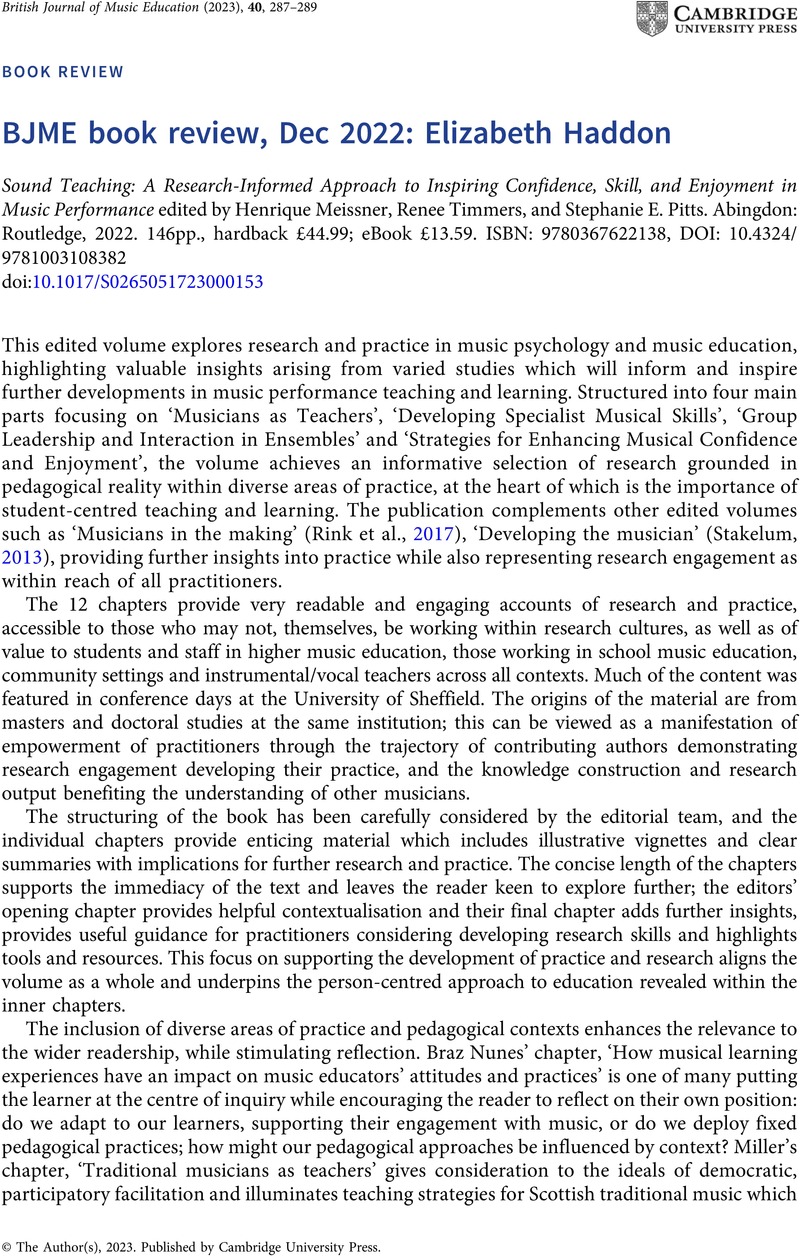No CrossRef data available.
Article contents
BJME book review, Dec 2022: Elizabeth Haddon - Sound Teaching: A Research-Informed Approach to Inspiring Confidence, Skill, and Enjoyment in Music Performance edited by Henrique Meissner, Renee Timmers, and Stephanie E. Pitts. Abingdon: Routledge, 2022. 146pp., hardback £44.99; eBook £13.59. ISBN: 9780367622138, DOI: 10.4324/9781003108382
Review products
Sound Teaching: A Research-Informed Approach to Inspiring Confidence, Skill, and Enjoyment in Music Performance edited by Henrique Meissner, Renee Timmers, and Stephanie E. Pitts. Abingdon: Routledge, 2022. 146pp., hardback £44.99; eBook £13.59. ISBN: 9780367622138, DOI: 10.4324/9781003108382
Published online by Cambridge University Press: 19 July 2023
Abstract
An abstract is not available for this content so a preview has been provided. Please use the Get access link above for information on how to access this content.

- Type
- Book Review
- Information
- Copyright
- © The Author(s), 2023. Published by Cambridge University Press
References
RINK, J., GAUNT, H. & WILLIAMON, A. (eds.) (2017). Musicians in the Making: Pathways to Creative Performance. New York: Oxford University Press.CrossRefGoogle Scholar
STAKELUM, M. (ed.) (2013). Developing the Musician: Contemporary Perspectives on Teaching and Learning. Farnham: Ashgate.Google Scholar



